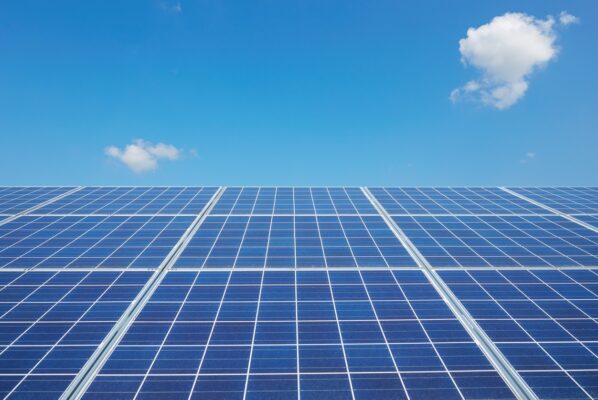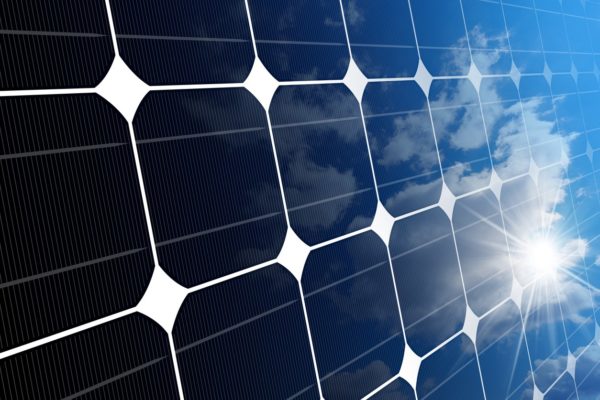
When considering the energy crisis that much of the world is currently experiencing, installing an industrial solar system is one of the most practical solutions. Coal, natural gas, and petroleum have been used to produce almost 80% of the world’s energy, all of which harm the environment and adversely affect the ecosystem.
Installing an industrial solar system at your plant offers many benefits beyond protecting the environment. However, you must choose wisely if you want these units to be effective. Before installing commercial solar panels for industrial use, you must consider a few things. After all, the setup can be challenging and technical.
If the environment and selected solar panel types are precisely matched, solar energy is a very cost-effective and efficient energy source and a truly dependable and long-lasting one. Such bright prospects have emerged in a sector that has invested much in creating effective methods to harness, utilize, and store solar energy by using various solar panel types and creating useful power.
How Efficient Are Solar Panels?

The amount of sunlight reflected off the panels’ surface and converted into electrical or thermal energy determines how effective the solar panels are.
Before recent advances in photovoltaic technology, the average efficiency of solar panels was around 15%. Now, that efficiency ranges from 15 to 22%. Solar panels with high efficiency can even reach about 23%. Hence, a panel’s usual power rating is 370W, up from 250W.
Photovoltaic (PV) cell efficiency and overall panel efficiency are the two criteria determining a solar panel’s efficiency.
Cell Efficiency
If you are wondering how to determine the total efficiency of the solar panels, simply divide their maximum power rating under the standardized test conditions by the total area occupied by the panels. It would be best to use the meter area measurement for the calculation.
Panel Efficiency
The type of silicon and the design of the cell are essential factors for determining photovoltaic cell efficiency. On the other hand, the cell configuration, layout, and solar panel size are the basics that help find the total panel efficiency.
Categorizing Different Types of Solar Panels

Different solar panel types are suitable for different purposes and needs. Considering that it is possible to use sunlight differently in space points or on earth, the location becomes a significant factor in picking the right type of solar panels for industrial use.
Distinguishing between solar panel types is the same as differentiating between multi-junction and single-junction solar panels. Here, we will do so by categorizing solar panels into generations.
Simply put, multi-junctions and single-junction solar panels differ in the number of layers on the solar panels’ surface. These solar panel layers absorb sunlight. On the other hand, generational categorization focuses on the efficiency and materials of different solar panel types.
First Generation Solar Panels
First-generation solar panels are the conventional ones, with monocrystalline and polycrystalline solar panels being the most common.
Monocrystalline Solar Panels
Monocrystalline panels are made with monocrystalline silicon and are the purest solar panel option on the market. These solar panels are easily recognizable, thanks to their rounded edges and uniformly dark appearance.
These solar panels’ high silicon purity level contributes to the high-efficiency rates provided by monocrystalline solar panels. Interestingly, the newest monocrystalline panels on the market have an efficiency rate of over twenty percent.
What else? Monocrystalline panels occupy less space, have an extensive shelf life, and give a high power output. They are also the least affected by extreme weather conditions like high temperatures. However, these excellent benefits mean these solar panels are costlier than their counterparts are.
Polycrystalline Solar Panels
Distinguishing between polycrystalline panels is easy – they are squared with uncut angles. Additionally, they have a blue, speckled appearance. These solar panels are made with melted raw silicon.
The melting process is much cheaper and quicker than the one used to make monocrystalline solar panels. How they are made lowers the solar panels’ efficiency rate (to fifteen percent) while reducing their lifespan. Not to mention, high temperatures can affect polycrystalline solar panels much more than monocrystalline panels.
Therefore, they are less expensive than monocrystalline solar panels. That said, the differences between monocrystalline and polycrystalline solar panels are not much and largely depend on their specific installation conditions.
Second Generation Solar Panels
Second-generational solar panels have different solar cells than those used in photovoltaic power stations. Let us learn about second-generation solar panels and whether they are the right choice for industrial use.
Thin-Film Solar Cells
Are you looking for more affordable solar panels for commercial use in the industry? If yes, you might want to consider thin-film solar panels. Manufacturing thin-film solar panels include adding one or more films of photovoltaic material, such as copper, calcium, or silicon, on a substrate.
Since thin-film solar panels are easy to produce and use less material, they are much cheaper than their other alternatives. Furthermore, these solar panels are flexible and versatile, opening opportunities for different solar panel installations. Not to mention, thin-film solar panels are comparatively less affected by weather conditions like high temperatures.
However, these solar panels occupy a lot of space, which makes them unsuitable for installation in various settings and locations. Depending on your available industrial space, you can decide whether they are a good pick.
In addition, they usually have a short lifespan and carry short warranties than monocrystalline and polycrystalline solar panels. Even then, they make for suitable options in large spaces.
Amorphous Silicon Solar Cell
If you have ever used solar-powered pocket calculators, you are probably aware of amorphous silicon solar cell panels. Amorphous silicon solar cells are most commonly used in these tools. These solar panels feature a triple-layer technology, among the best options for thin-film varieties.
Are you wondering what “thin” means? Regarding solar cells, “thin” refers to a thickness of one micrometer. These cells have an efficiency rate of only 7%, lower than crystalline silicon cells, which have an efficiency rate of about 18%. However, the A-Si-Cells have the advantage of being more affordable.
Third-Generation Solar Panel
Several thin film technologies are used in third-generation solar panels, but most are still in the research or development stages. Some employ organic materials to produce energy, while others use inorganic materials like CdTe.
Biohybrid Solar Cell
One sort of solar panel that is still in the development stage is the biohybrid solar cell. A seasoned group at Vanderbilt University made the discovery. Using photosystem 1 to mimic the natural process of photosynthesis is the premise behind the new technology.
The American Journal of Optics and Photonics has further information about the biohybrid solar cell if you want to learn more about its functions. It provides greater information on how these cells function. Many of the materials used in this cell are identical to those used in conventional systems. Still, combining photosystem 1’s numerous layers makes converting chemical energy to electrical energy significantly more efficient (up to 1000 times more efficient than first-generation panels).
Cadmium Telluride Solar Cell
This photovoltaic technology uses cadmium telluride, which allows the production of solar cells at a comparatively low cost and hence a quicker payback time among the variety of other types of solar panels (less than a year).
This solar energy technology uses less water during production than the others. Because of the quick energy payback time, your carbon footprint will be as small as feasible using CdTe solar cells. The fact that Cadmium Telluride is poisonous if consumed or inhaled is the only drawback of using it.
Concentrated PV Cell
Concentrated photovoltaic cells produce electricity in the same way as traditional solar systems. These multi-junction solar panel types have the highest efficiency rate of all existing photovoltaic systems, up to 41%.
Such concentrated photovoltaic cells get their name from the features that make them more effective than other solar panels: lenses, curved mirror surfaces, and occasionally even cooling systems are utilized to concentrate sunlight and boost efficiency.
As a result, these solar panel cells, which have a high performance and efficiency rate of up to 41%, have evolved into one of the most effective solar panels. It is true that concentrated CV cell solar panels can only be as effective if they face the sun at the ideal angle. The solar panel’s solar tracker is in charge of tracking the sun for high-efficiency rates.
Contact Coldwell Solar for Industrial Solar Panel Installation
As they consider the benefits of installing commercial solar panels, many businesses in our country have recently started focusing on the solar energy industry. Whether in the hospitality industry, the healthcare or technology sector, government offices, or NPOs, everyone chooses to go green.
Unquestionably, installing industrial solar panels at your location is an investment in the better and more prosperous future of your business and society. To learn more about installing an industrial solar system and starting to reap these rewards for your company, get in touch with Coldwell Solar.

